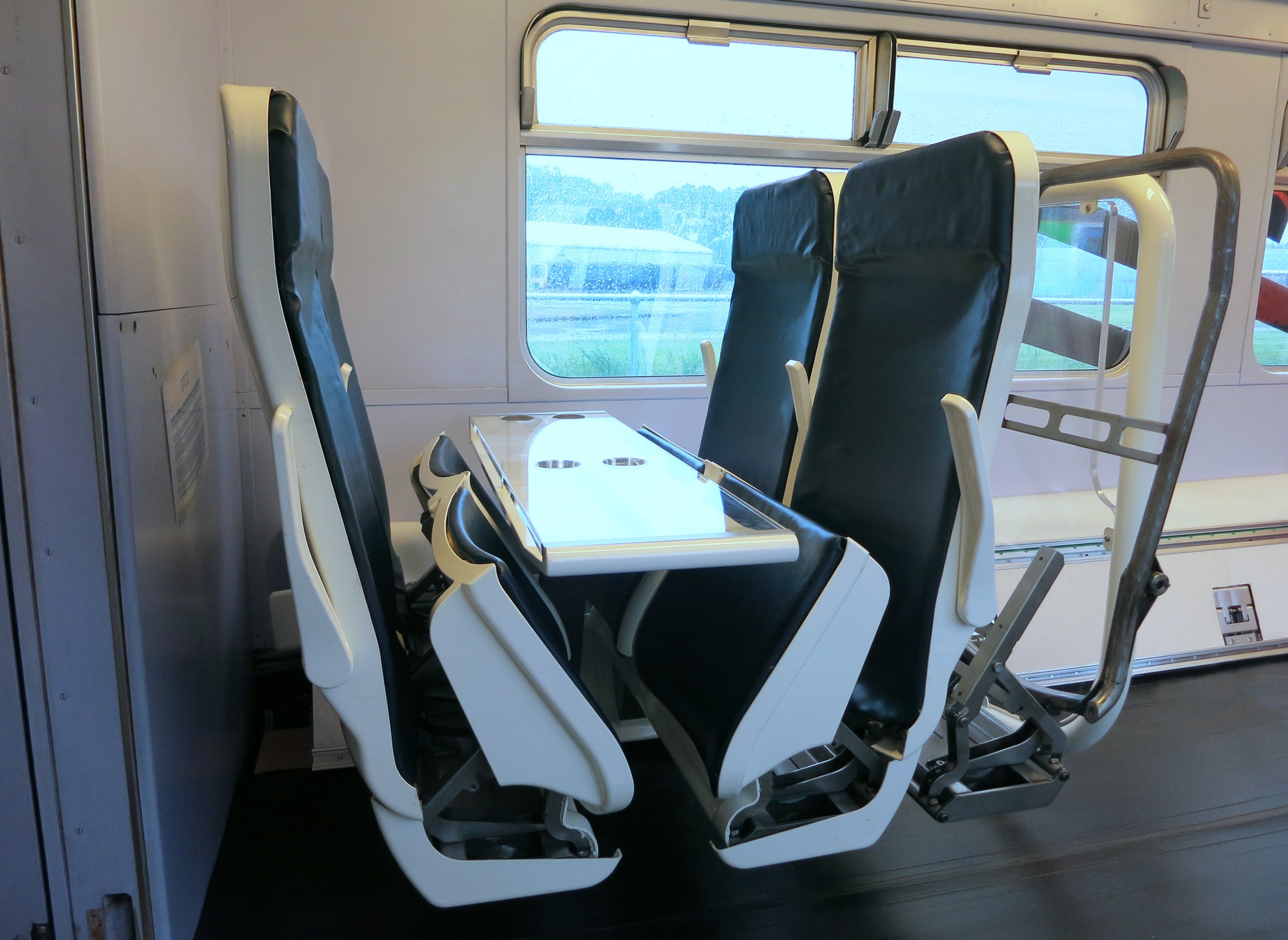
Railway companies today have a myriad of challenges – from ensuring punctuality and giving a good service for passengers to managing stock and creating enough space for freight.
42 Technology aims to solve some of these challenges facing the UK supply chain – whether consumer or industrial – through its adaptable carriages that enable flexible use of passenger trains for freight transport, as 42 Technology’s Transport Sector Lead Zane van Romunde explains.

Discover B2B Marketing That Performs
Combine business intelligence and editorial excellence to reach engaged professionals across 36 leading media platforms.
Varsha Saraogi: How did the idea for the Adaptable Carriage come about?
Zane van Romunde: The initial idea for Adaptable Carriage originated in 2014 as a result of Jon Spratley, 42 Technology’s managing director, making his daily commute with two of the company’s other engineers from Hitchin to Huntingdon by train. The journey is the reverse of the London commute, the train was almost empty and the three engineers started talking about how the considerable spare passenger carrying capacity, particularly on off‐peak trains, could potentially be used for something more productive.
42 Technology then submitted an entry into RSSB’s ‘Tomorrow’s Train Design Today’ competition and was one of ten design teams shortlisted to receive up to £75K to fund the next stage development of its scheme. Having developed the business case for Adaptable Carriage, 42 Technology was then named as one of three overall winners to share in a £2.2M competition prize fund to continue developing its initial concept into a working, full scale prototype.
The company launched a working demonstration module at Railtex in May 2017, and since then has been working with a range of rail industry stakeholders to help de‐risk its approach as it advances towards commercialisation.

US Tariffs are shifting - will you react or anticipate?
Don’t let policy changes catch you off guard. Stay proactive with real-time data and expert analysis.
By GlobalDataVS: What are the key benefits of using an Adaptable Carriage?
ZVR: Adaptable Carriage is a unique train seat mounting and folding mechanism that allows unused passenger seats to be folded and moved along the carriage to create flexible open space for the transport of cargo, bikes, luggage or other purposes. The system could be used by train operating companies (TOCs) to create space on demand, or to configure complete carriages if required to carry either passengers or high‐value cargo that would otherwise go by road.
The approach was initially suggested by 42 Technology as a way for the UK rail industry to secure additional revenues from its existing infrastructure that could be invested in improved facilities and services for passengers or offset against ticket price increases. However, Adaptable Carriage could also help meet growing demands from the logistics sector, while relieving road demand pressure.
In addition, it offers improved loading times and more practical cargo‐carrying capacity without affecting the passenger experience because all the required seats can be moved out of the way, rather than trying to place cargo on or around seats.
VS: One of the obstacles facing TOCs are the high costs involved in buying carriages. How can adaptable carriages be of help?
ZVR: If Adaptable Carriage was used to create space for cargo, then it could provide TOCs with a completely new revenue stream. While at the same time giving retailers and logistics companies a faster, lower cost and more reliable way to get time‐sensitive deliveries into city centres during off‐peak hours rather than sending them by road. If the system is used for PRM or bike storage, these can be provided flexibly in response to demand, allowing the space to be used for passenger seating at other times.
Each Adaptable Carriage has a cargo capacity equivalent to an articulated lorry trailer, and could generate as much as £3m of revenue for the TOC each year. Scaling this up to multiple Adaptable Carriages per train, trains per route and routes across the country yields a sizable opportunity for the UK rail sector. The technology is also equally applicable to other countries with cities where inner city congestion and off‐peak train capacity are seeking solutions.
VS: How has the concept of the Adaptable Carriage progressed since its launch?
ZVR: 42 Technology started the first phase of its concept development work in September 2015 by meeting with and getting feedback from UK rail industry stakeholders. The detailed design and engineering work was then started in September 2016.
Since then the company has continued to de‐risk the approach and to work with a range of industry stakeholders – including TOCs, ROSCOs and seat and carriage manufacturers – to advance the technology to the stage where it is now ready and available for its first rail trials. In addition, 42 Technology has recently installed its Adaptable Carriage seating system into a real train carriage for the first time as part of Porterbrook’s Innovation Hub that was launched at Rail Live in June.
The company is also finalising a second Adaptable Carriage demonstration unit – ready for full integration into a rail car body chassis – that features a more advanced, key‐operated control unit to automatically reconfigure seats between passenger and cargo configurations, and uses off‐the‐shelf rail certified seats.
VS: How will 42 Technology ensure more TOCs get on board with the concept of Adaptable Carriages?
ZVR: 42 Technology is continuing to engage with the UK and global rail industries to promote the Adaptable Carriage technology. But as an engineering services company, 42 Technology is not in a position to manufacture or install the system or to operate a cargo service. However, it is seeking to license the technology and would welcome enquiries from interested parties.





